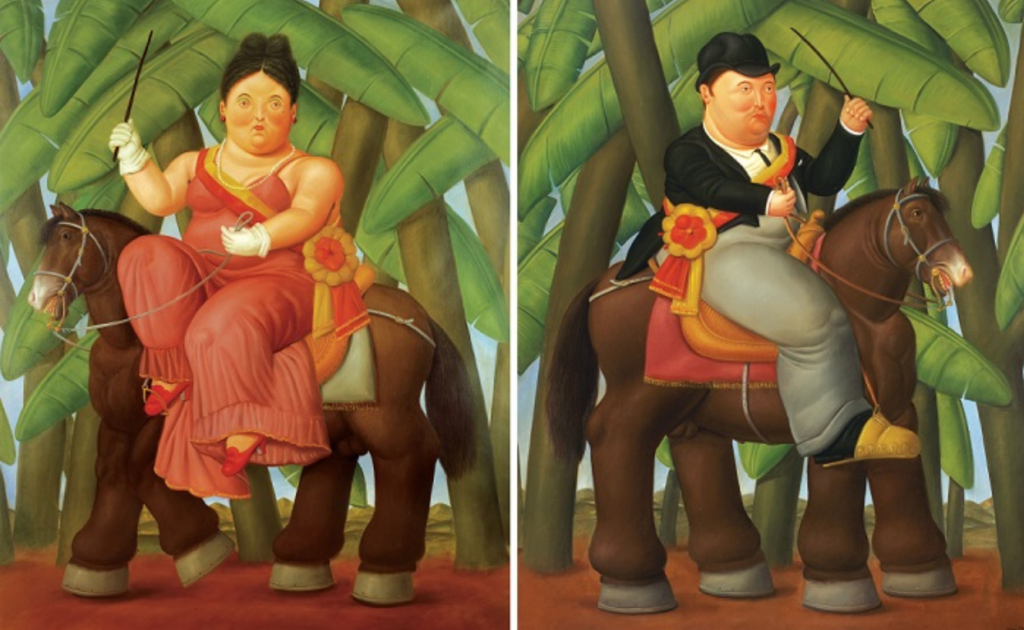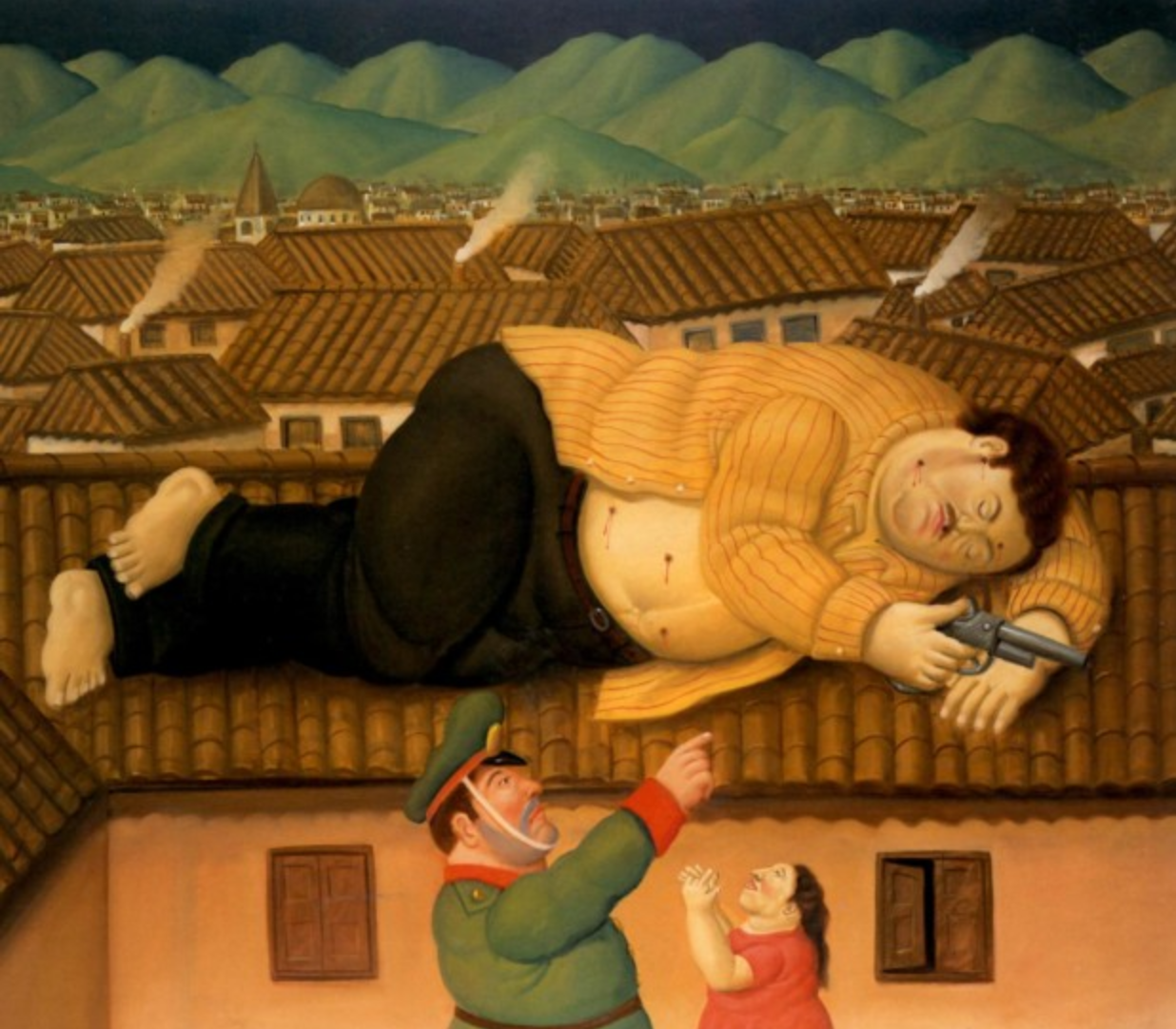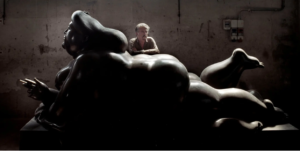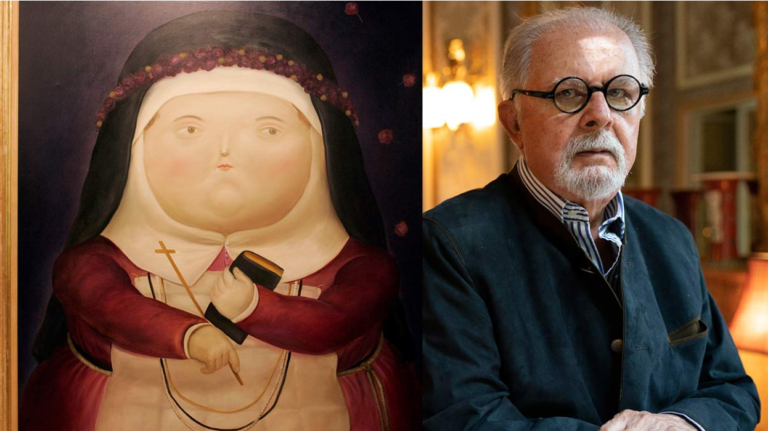“I often think about death, and it saddens me to leave this world and not be able to paint more. I love it so much.” – Fernando Botero
On Friday, September 15th, 2023, the world received the somber news of the passing of one of Latin America’s most iconic artists and champion of Colombian heritage, Fernando Botero.
Colombian President Gustavo Petro’s tweet was filled with reverence, encapsulating the profound impact of Botero’s art: “Ha muerto Fernando Botero, el pintor de nuestras tradiciones y defectos, el pintor de nuestras virtudes. El pintor de nuestra violencia y de la paz. De la paloma mil veces desechada y mil veces puesta en su trono (Fernando Botero has died, the painter of our traditions and flaws, the painter of our virtues. The painter of our violence and peace. Of the dove discarded a thousand times and a thousand times placed on its throne.)”
Botero, who proudly referred to himself as “the most Colombian of Colombian artists,” embodied a lifelong dedication to portraying the rich Colombian culture. Through his masterful strokes and sculptures, Botero breathed life into Colombia’s identity, carving out a cherished space in the nation’s cultural heart.
Throughout his long career, Botero produced many masterpieces and a signature style known as “Boterismo” that helped elevate the symbols of Colombia to iconic status, cementing his profound connection to his roots. In his unique and whimsical works, Colombia’s soul was etched into every skillful brushstroke as he depicted colonial architecture, indigenous spirits, the circus, bullfights, and lush landscapes on his canvases – often with a sense of humor and satire.

A Life in Exaggeration and the Birth of “Boterismo”
Born on April 19, 1932, in Medellin, Colombia, Botero’s journey as an artist began with humble beginnings. At the age of 12, his uncle enrolled him in a training school for bullfighters, only to realize that his nephew had a precocious talent for painting and preferred to draw and paint bulls and matadors than participate in bullfights. .
Botero’s path as an artist was not without obstacles. At 16, he became the family’s primary breadwinner after the loss of his father. Yet, he persisted in pursuing his passion and in 1948, his illustrations would be published in significant newspapers in Medellin. And by 1951, Botero had his first one-man show.
At only 20 years old, Botero won 2nd place at Bogotá’s Salón Nacional de Artistas, which led to his travels throughout Europe with fellow artists. His talent and dedication led him to the Academia de San Fernando in Madrid, Spain, where he immersed himself in European art traditions. It was during his time that Botero developed his distinctive style, blending Latin American sensibilities with European techniques. He drew inspiration from Old Masters like Velázquez and Goya while infusing his creations with the vibrancy of his Colombian roots.
In 1956, Botero had a breakthrough, a defining moment that would become the catalyst for his signature style. At the time, he was living in Mexico City. He was painting a mandolin and by painting the sound hole uncharacteristically small, his fascination with exaggeration and disproportionate volume.
Botero’s art became a world of whimsy, where proportions and volumes were distorted to delightful effect and creative expressions exploded with color. This appreciation for disproportionate figures and roundness gave birth to “Boterismo” – a realm where proportions take on a life of their own and plump, oversized figures and objects dance with humor, satire, and caricature.
“Art is always an exaggeration in some sense; in color, form, even in theme.”
Botero’s art featured a wide array of subjects, including scenes of everyday life, animals, and political and social commentary. In Mona Lisa (1978), Botero depicts a playful reinterpretation of Leonardo da Vinci’s masterpiece, with exaggerated features and a touch of humor. Dancing in Colombia (1980) captures dance, musicians, and instruments with plump, exuberant figures.
The artist once revealed that all the girlfriends he’d had in his life had all been skinny. For Botero, “beauty in art has nothing to do with beauty in reality.”

A Larger-Than-Life Legacy
While Botero’s art commanded the spotlight, lesser-known facets of his life added depth to the narrative of this artistic legend. In 1973, Botero endured a devastating personal tragedy when his four-year-old son, Pedro, died in a car accident. This heartbreaking loss profoundly influenced the themes of his art, which often explored grief and human suffering.
Throughout his career, Botero created art that challenged the status quo. His politically charged works shed light on societal injustices, addressing abuses of power and the horrors of war. In The Presidential Family (1967), Botero boldly expresses a satirical critique of political power and corruption, featuring caricatured Colombian politicians. One of his most iconic pieces is The Death of Pablo Escobar (2006) which addresses the death of the infamous drug lord with grotesque and exaggerated imagery.
Botero’s talents also extended beyond two dimensions; he was a prolific sculptor. His sculptures, characterized by plump, exaggerated forms, found homes in public spaces worldwide and became beloved landmarks. The Bird (1990) is a massive bronze sculpture with exaggerated curves, while Man on Horse (1992) is a sculpture portraying a man on horseback with exaggerated proportions, blending humor and nobility.
Beyond his art, Botero was known for his philanthropic efforts. He donated a significant portion of his art collection to the Museo Botero in Bogotá, which houses an extensive collection of his works and pieces by other renowned artists.

Paving the Path for Generations of Latin American Artists
Botero’s art transcended borders and resonated across continents – a testament to the enduring power of artistic expression. His creations found homes in prestigious art institutions and esteemed private collections worldwide. This global recognition not only attests to his artistic prowess but also celebrates his commitment to showcasing Colombia’s vibrant identity.
Critics may have dismissed his “fat people” paintings as grotesque and a passing gimmick, but Botero’s creations found their way into prestigious museums and collections worldwide. And Botero’s global recognition and success ultimately helped shift the spotlight onto Latin American art, challenging Western-centric views and stereotypes.
The passing of Fernando Botero marks the end of an era. At 91, he leaves behind a legacy that stretches across continents and generations. Through “Boterismo,” he breathed life into the ordinary, capturing the human spirit and inviting us to celebrate the beauty and reality of perfect imperfections. By boldly doing so, he inspired audiences with not only a distinct art style but also to speak profound truths.
He is not only the most beloved Latin American artist of his time but also one of the most commercially successful. In 2007, Botero’s The Musicians (1979) was auctioned for a little over $2 million at a New York auction. And in 2022, Man on a Horse (1999) sold for over $4 million.
The artist’s distinctive Boterismo style and ability to bridge traditional and contemporary art forms, combined with his unapologetic celebration of Colombian culture and identity, has paved the way for a new generation of artists to gain recognition on the global stage.



![[Left] Kusama with her piece Dots Obsession, 2012, via AWARE, [Right] Yayoi Kusama (Courtesy Whitney Museum of American Art) | Source: thecollector.com](https://www.artdex.com/wp-content/uploads/2024/04/Left-Kusama-with-her-piece-Dots-Obsession-2012-via-AWARE-Right-Yayoi-Kusama-Courtesy-Whitney-Museum-of-American-Art-Source-thecollector.com--300x172.png)



